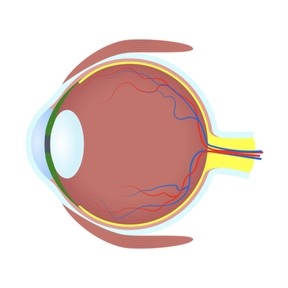



8,000 schools use Gynzy
92,000 teachers use Gynzy
1,600,000 students use Gynzy
General
The eyes work hard from the moment you wake up in the morning to the moment you close your eyes at night. They take everything in and allow you to see the world around you! This lesson will teach students about the major parts of the eye and how each of those parts work together to help the images we see reach our brain.
Standards
NGSS:
MS-LS1-3
MS-LS1-8
Learning Objective
Students will be able to describe the functions of the different parts of the eye and identify the main parts including the retina, iris, and optic nerve.
Introduction
The lesson begins with a description of how the eyes take in lots of information throughout the day and send it all to the brain. Students will observe a partner’s eyes and try to identify what they see. Then have students draw a sketch of their partner’s eyes.
Instruction
Students learn about the eyelids, eyelashes, iris, sclera, and the pupil, and the function of each of these parts. Explain that the pupil responds to light by becoming smaller when light shines near it. Have students drag the flashlight onto the eye to shrink the pupil. After this, explain the other parts of the eye: the cornea, lens, anterior chamber, optic nerve, retina, and vitreous body. Describe each part and its purpose. Next, students learn how vision works. Light travels through the cornea and reaches the lens. The image is sent to the retina, and it is finally sent to the brain through the optic nerve where it is processed and translated into something we can understand and recognize. Discuss how our eyes can sometimes play tricks on us and explain how optical illusions work. Let students share from their own personal experiences and try to decipher an optical illusion on the interactive whiteboard. Finally, explain the function of tears and share some ways to protect your eyes.
Quiz
Students respond to ten questions consisting of true or false, multiple-choice, and fill-ins.
Closing
To conclude, review and ask students to decide how important vision is. How might they adapt if they lost their eyesight or could not see? Students drag the different parts of the eye to the correct place.
The online teaching platform for interactive whiteboards and displays in schools
Save time building lessons
Manage the classroom more efficiently
Increase student engagement
Discover more!
About Gynzy
Gynzy is an online teaching platform for interactive whiteboards and displays in schools.
With a focus on elementary education, Gynzy’s Whiteboard, digital tools, and activities make it easy for teachers to save time building lessons, increase student engagement, and make classroom management more efficient.



